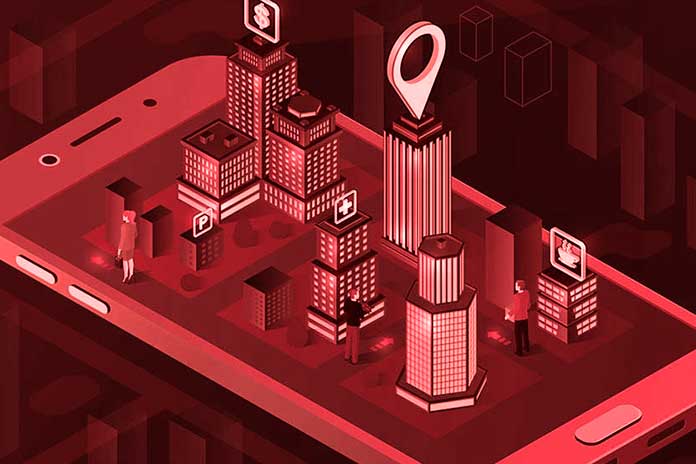Most people have probably heard the term “location intelligence” before or have a vague idea. However, there is a common misconception: location intelligence is not just about location. It’s about the people who visit and interact with this place. Because without the interaction of people, an area is meaningless – especially from a business perspective.
Therefore, the attempt to understand the attractiveness of specific locations is not new in the context of the real estate market, retail, and city management. Data is used for decision-making, which is usually too static, general, or one-dimensional. These include, for example, results from official surveys that show population growth in a specific city or trends in real estate prices. There is often a lack of data on which groups of visitors visit a particular place and when so many business decisions are often based on insufficient information.
Looking For Data-Driven Insights Into The World Of Retail Real Estate
From a technological point of view, attempts have been made to solve the problem mentioned and optimise location-based decision-making by providing more precise data as a basis for decisions. This is mainly done by using electronic devices that count the number of visitors entering or leaving a particular location. These devices can be classified as laser, Wi-Fi, and video systems. However, the data they produce is limited in its validity. They capture the flow of visitors to unique places and neglect a broader, more nuanced understanding of which groups of people visit a site. Detailed information – such as how long the visitor groups stay at a particular place.
The bottom line is that those who want to make decisions based on reliable insights into brick-and-mortar retail only have somewhat imprecise, crude information to fall back on, unlike their online counterparts.
Big Data In The Context Of Pedestrian And Visitor Analysis
There are now technologies that improve the analysis of visitor flows and thus enable differentiated insights into the data obtained. Artificial intelligence, machine learning, and big data analysis are combined to generate precise and networked insights into the flow of pedestrians at each location. This finally equips the traditional brick-and-mortar retail world with tools previously only available online. This changes location-based decision-making in real estate, retail, outdoor advertising, and urban planning, to name just a few application areas.
Smartphones act as the lowest common denominator – almost everyone has one in their pocket these days. But the real key to this data is the smartphone app. Apps provide access to billions of GPS data points. These serve as a basis for a better understanding of people’s movements and interactions with the physical world. This may sound unsettling at first. But what if the data were aggregated and evaluated anonymously for the respective location instead of at the individual level at the group level?
This is our approach in line with GDPR. Data is cleaned using a protected process so that individuals cannot be identified in the population. At the same time, the data is only obtained from apps if their users agree that data collected for this purpose of group and market analysis may be passed on and used.
GPS Makes It Possible
Closing the data gap between the information available to online retailers and the data in the context of the actual retail world would not be possible without GPS. Geographical accuracy (5 to 10 metres) is far better than alternative triangulation using cellular (about 200 metres).
Nevertheless, GPS data has its pitfalls. For example, there may be different app usage patterns in other population groups. This means that a given app’s user base may not represent the overall population. Applications may also have different usage patterns for various activities (e.g., eating out or shopping). These challenges lead to data bias if not classified correctly.
We use a patent-pending machine-learning algorithm to eliminate inaccuracies and determine realistic footfall for a given location. This includes several mathematical models continuously used and tested in different regions/areas to calibrate the data. This allows visitor groups to be measured and understood at any location.
Billions Of Data Points, The High-Precision Image Of Reality
We rely on a large data panel of over eight million devices. On average, these devices generate more than two billion so-called monthly pings, which, when filtered and enriched by our algorithms, result in an exact representation of reality.
We then compare the results with additional data sources to include demographics, purchasing power, gender distribution, and age groups in the analysis at the group level. This information is invaluable to decision-makers – particularly those looking to rent retail space or retailers pursuing an expansion strategy. In this way, you can analyse the number of visitors to a specific location and the profiles of different types of visitors.
The world of location-based information is changing with access to new, advanced analysis methods in the context of AI and Big Data. These AI-powered, data-driven insights put analytics at the heart of location-based real-world decision-making today. Retailers can optimise their commercial operations and, as a result, increase their attractiveness in the eyes of customers. Retail real estate professionals get an overview of how (and how often) people travel to their malls (and those of their competitors). You can analyse how many people visit a location and how often they come back and compare both metrics to other sites.
It is finally possible to democratise connected real-world data far beyond the needs of the advertising industry. This enables access to facts that experts need in interaction with the natural world to advance companies and cities in a forward-looking manner.



